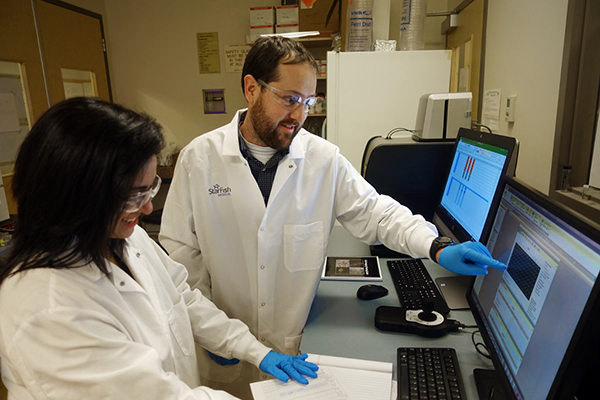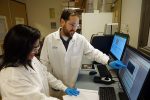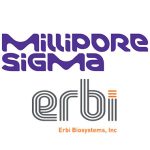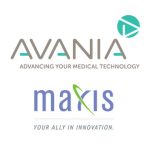Infectious diseases point of care (POC) development is going to become a rapidly growing market in the near future (five to 15 years). Rapid POC testing is increasingly deployed as an aid in the diagnosis of infectious disease, due to its ability to deliver quick, actionable results while the healthcare provider still has access to the patient being tested.
Major population and economic growth in developing areas will outpace current infrastructure (hospitals, traditional diagnostic labs), shifting to a reliance on POC diagnostic options. Population growth and urbanization of developing areas will bring emerging disease and resistance pressures that compound and exacerbate demand for this product area.
Why POC?
In major industrialized regions, with a robust economy, the consumer base will demand robust POC platforms to monitor and implement custom medicine/diagnostics.
Infectious disease diagnostics is the process of identifying the presence of a foreign antigen/organism with the help of various diagnostic tools. Infectious disease conditions are highly prevalent in under developed regions due to lack of awareness for personal hygiene, minimal healthcare expenditures and absence of efficient medical services. Emerging economies formulate a major share of the overall market.
This opportunity has grabbed the attention of in vitro diagnostic (IVD) device manufacturers. Companies are taking efforts to develop and commercialize cost effective tools for infectious disease diagnosis.
What’s Changing?
Presently, the gold standard tests for bacterial infections and sexually transmitted disease diagnosis are based on technologies routed in labor intensive, well characterized laboratory tests derived from Koch’s postulates (circa 1884). However, these tests are expected to be replaced by molecular techniques in the future.
Rapid advances in molecular techniques and the ready availability of miniaturized inexpensive electronic components are moving this field. Previously firmly mired in the realm of the central diagnostic laboratory, infectious disease diagnostics are heading to the open access POC world.
Geography
The global market for infectious disease is segmented into four major regions: North America, Europe, Asia Pacific and Rest of the World (ROW). Although industrially developed nations in Europe and North America account for largest share in the global market, high growth is in the emerging markets of Asia-Pacific regions.
The demand in Asia-Pacific is attributable to high population growth, increasing awareness and investments in healthcare infrastructure. Big players in the market are focusing on this geography to compensate slowing business in highly competitive western markets, according to a Transparency Market Research report about infectious diseases in the in vitro diagnostics market. Competitiveness is augmenting each day with a greater number of players seeking to leverage benefits of this growing market.
Activity and Funding
Generally, emerging diseases and bioterrorism threaten public health, while infectious diseases such as tuberculosis and malaria have long imposed a severe burden on the developing world. The Gates Foundation has repeatedly identified the need for rapid, accurate, inexpensive, robust diagnostics in developing countries. This need could be met by recent advances in genomics, proteomics, and materials science if there was a profitable market. Several funding initiatives (such as Foundation for Innovative New Diagnostics (FIND) are opening up to support development in this area and geography.1
Technology
The immunoassay was a dominating segment in 2014 with revenue generation of more than $ 4.5 million, according to Grand View Research. Enzyme Linked Immunosorbent Assay (ELISA) and chemiluminescence immunoassays are the widely used forms of immunochemistry over the forecast period. Cost-effective procedures, user-friendliness and high acceptance rates in clinical laboratories are key factors attributing to market share.
Molecular diagnostic approaches and advanced improvements of immune-based detection platforms like Perkin Elmer’s AlphaLisa system are poised to supplement and replace ELISA-based systems in 5-10 years. Improved accuracy, rapid results, and higher levels of specificity will drive this change.
Kit development companies are collaborating with molecular instrument manufacturers to develop assays for detection of infectious diseases. One example is a BD assay for MRSA detection used in combination with Cepheid SmartCycler, according to Transparency Market Research.
Regulatory
Rapid technology advances in molecular techniques, processing, throughput, miniaturization and cost of imaging technologies suggest that infectious disease diagnostics will also undergo rapid advances. The regulatory landscape will be required to accept and adapt to these advances.
Recent congressional changes made to the IVD diagnostics approval process reflect this adjustment. A draft proposal requiring informed consent for research with de-identified residual clinical sample that was outlined in the 2011 Advanced Notice of Proposed Rulemaking for human subjects research protections (i.e., the Common Rule), was withdrawn because it would severely limit the conduct of diagnostics research.
Other Proposed Regulatory Changes2
- CDRH should revise the guidance for RUO/IUO (research or investigational use only) devices and permit use in cases where there are no other diagnostic options
- CDRH should exercise its flexibility and exempt companies from re-demonstrating the clinical validity of a novel diagnostic product after multiple studies have been conducted for similar products
- CDRH and CDER should provide greater clarity in guidance for the co-development of drugs and diagnostics
- Assist in the development of strategies to preserve specimens for public health surveillance purposes (e.g., by asking developers of new technologies to include a public health “plan” with their submission)
In Summary
Rapid POC testing is increasingly deployed as an aid in the diagnosis of infectious disease. This opportunity has grabbed the attention of in vitro diagnostic (IVD) device manufacturers. Navigating the infectious diseases POC assay development landscape can be tricky business, but the journey may be well worth the trouble given the opportunities this emerging market can offer—just be sure to use a good compass.
References
- Institute of Medicine (US) Forum on Microbial Threats. Global Infectious Disease Surveillance and Detection: Assessing the Challenges—Finding Solutions, Workshop Summary. Washington (DC): National Academies Press (US); 2007. 3, Detection and Diagnostics. Retrieved from https://www.ncbi.nlm.nih.gov/books/NBK52875/
- Caliendo, A. (2013). “Better Tests, Better Care: Improved diagnostics for infectious diseases” Clin Infect Dis 57 (suppl_3):S139-S179.







